
Only Regulatory Products (API/FDF), Drugs in Developments and News are Updated on this Virtual Booth
Update your Virtual Booth on PharmaCompass, ask us ![]()
About
Not Confirmed
Not Confirmed
24-26 February, 2026
Global ChemShowGlobal ChemShow
Not Confirmed
Not Confirmed
19-20 December, 2025
BIO Partnering at JPMBIO Partnering at JPM
Not Confirmed
Not Confirmed
12-15 January, 2026
List your booth number for exhibitions, ask us
CONTACT DETAILS
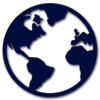
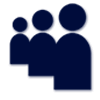


Upload your Marketing & Sales content on your company Virtual Booth, click HERE.
Events
Webinars & Exhibitions
Industry Trade Show
Not Confirmed
24-26 February, 2026
Global ChemShowGlobal ChemShow
Industry Trade Show
Not Confirmed
19-20 December, 2025
BIO Partnering at JPMBIO Partnering at JPM
Industry Trade Show
Not Confirmed
12-15 January, 2026
Digital content

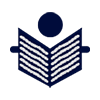
17 Nov 2025
// BUSINESSWIRE
https://www.businesswire.com/news/home/20251116413366/en/Polpharma-Biologics-Confirms-U.S.-Launch-of-Tyruko-natalizumab-the-First-and-Only-Biosimilar-for-Multiple-Sclerosis
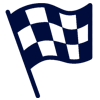
14 Nov 2025
// FDA
https://www.accessdata.fda.gov/scripts/cder/daf/index.cfm?event=overview.process&ApplNo=218792

12 Nov 2025
// FDA
https://www.accessdata.fda.gov/scripts/cder/daf/index.cfm?event=overview.process&ApplNo=219989

12 Nov 2025
// PR NEWSWIRE
https://www.prnewswire.com/news-releases/eirgenix-signed-the-commercial-licensinse-agreement-for-its-second-her2-biosimilar-asset-eg1206a-302612772.html

06 Nov 2025
// PRESS RELEASE
https://www.evotec.com/news/in-a-landmark-industry-transaction-evotec-signs-agreement-with-sandoz-resulting-in-payments-potentially-over-us-650-m-plus-royalties-on-portfolio-of-up-to-10-biosimilar-molecules

08 Oct 2025
// HEALTH CANADA
https://recalls-rappels.canada.ca/en/alert-recall/lisinopril-hct-2025mg-out-specification-test-results
GDUFA
DMF Review : N/A
Rev. Date :
Pay. Date :
DMF Number : 28649
Submission : 2015-02-02
Status : Inactive
Type : II

GDUFA
DMF Review : N/A
Rev. Date :
Pay. Date :
DMF Number : 8757
Submission : 1990-09-25
Status : Active
Type : II

GDUFA
DMF Review : N/A
Rev. Date :
Pay. Date :
DMF Number : 5892
Submission : 1985-06-03
Status : Inactive
Type : II

GDUFA
DMF Review : N/A
Rev. Date :
Pay. Date :
DMF Number : 5944
Submission : 1985-07-17
Status : Inactive
Type : II

GDUFA
DMF Review : N/A
Rev. Date :
Pay. Date :
DMF Number : 4996
Submission : 1983-06-21
Status : Active
Type : II

GDUFA
DMF Review : N/A
Rev. Date :
Pay. Date :
DMF Number : 17683
Submission : 2004-09-10
Status : Active
Type : II

GDUFA
DMF Review : N/A
Rev. Date :
Pay. Date :
DMF Number : 4990
Submission : 1983-06-21
Status : Active
Type : II

GDUFA
DMF Review : N/A
Rev. Date :
Pay. Date :
DMF Number : 10838
Submission : 1994-03-29
Status : Active
Type : II

GDUFA
DMF Review : N/A
Rev. Date :
Pay. Date :
DMF Number : 16887
Submission : 2003-10-02
Status : Inactive
Type : II

GDUFA
DMF Review : N/A
Rev. Date :
Pay. Date :
DMF Number : 22964
Submission : 2009-07-21
Status : Active
Type : II

 FULL SCREEN VIEW Click here to open all results in a new tab [this preview display 10 results]
FULL SCREEN VIEW Click here to open all results in a new tab [this preview display 10 results]Excipients
GDUFA
DMF Review : N/A
Rev. Date :
Pay. Date :
DMF Number : 10979
Submission : 1994-07-07
Status : Inactive
Type : IV

Excipients Web Link
 FULL SCREEN VIEW Click here to open all results in a new tab [this preview display 10 results]
FULL SCREEN VIEW Click here to open all results in a new tab [this preview display 10 results]Inspections and registrations

Country : Slovenia
City/Region : Lendava
Audit Date : 2025-10-07
Audit Type : On-Site
 FULL SCREEN VIEW Click here to open all results in a new tab [this preview display 10 results]
FULL SCREEN VIEW Click here to open all results in a new tab [this preview display 10 results]ABOUT THIS PAGE
Sandoz B2B is a supplier offers 149 products (APIs, Excipients or Intermediates).
Find a price of Amoxicillin Trihydrate bulk with DMF, CEP, JDMF offered by Sandoz B2B
Find a price of Ampicillin Sodium bulk with DMF, CEP, JDMF offered by Sandoz B2B
Find a price of Levothyroxine Sodium bulk with DMF, CEP, JDMF offered by Sandoz B2B
Find a price of Penicillin G Potassium bulk with DMF, CEP, JDMF offered by Sandoz B2B
Find a price of Cefpodoxime Proxetil bulk with CEP, JDMF offered by Sandoz B2B
Find a price of Amoxicillin Sodium bulk with DMF, CEP offered by Sandoz B2B
Find a price of Ampicillin bulk with DMF, CEP offered by Sandoz B2B
Find a price of Ampicillin Trihydrate bulk with DMF, CEP offered by Sandoz B2B
Find a price of Benzylpenicillin Sodium bulk with DMF, CEP offered by Sandoz B2B
Find a price of Cefazolin Sodium bulk with DMF, CEP offered by Sandoz B2B
Find a price of Ceftazidime bulk with DMF, CEP offered by Sandoz B2B
Find a price of Ceftriaxone bulk with DMF, CEP offered by Sandoz B2B
Find a price of Clavulanic Acid bulk with DMF, CEP offered by Sandoz B2B
Find a price of Cloxacillin Sodium bulk with DMF, CEP offered by Sandoz B2B
Find a price of Penicillin G Benzathine bulk with DMF, CEP offered by Sandoz B2B
Find a price of Penicillin G Procaine bulk with DMF, CEP offered by Sandoz B2B
Find a price of Penicillin V Potassium bulk with DMF, CEP offered by Sandoz B2B
Find a price of Cefixime bulk with DMF offered by Sandoz B2B
Find a price of Cefixime bulk with CEP offered by Sandoz B2B
Find a price of Cefotaxime bulk with DMF offered by Sandoz B2B
Find a price of Cefpodoxime Proxetil bulk with DMF offered by Sandoz B2B
Find a price of Clavulanic Acid bulk with DMF offered by Sandoz B2B
Find a price of Penicillin G Potassium bulk with CEP offered by Sandoz B2B
Find a price of 1H-Imidazo 1 2-A Pyridin-4-Ium bulk with DMF offered by Sandoz B2B
Find a price of 6-Aminopenicillanic Acid bulk with DMF offered by Sandoz B2B
Find a price of 7-Amca bulk with DMF offered by Sandoz B2B
Find a price of 7-Amino Cephalosporanic Acid bulk with DMF offered by Sandoz B2B
Find a price of Amoxicillin Sodium bulk with CEP offered by Sandoz B2B
Find a price of Ampicillin Sodium bulk with CEP offered by Sandoz B2B
Find a price of Azithromycin bulk offered by Sandoz B2B
Find a price of CAS 24280-93-1 bulk with DMF offered by Sandoz B2B
Find a price of Cefdinir bulk with DMF offered by Sandoz B2B
Find a price of Cefepime bulk offered by Sandoz B2B
Find a price of Cefozopran Hydrochloride bulk with JDMF offered by Sandoz B2B
Find a price of Ceftazidime bulk with DMF offered by Sandoz B2B
Find a price of Cefuroxime Axetil bulk offered by Sandoz B2B
Find a price of Cephalosporin C Sodium bulk with DMF offered by Sandoz B2B
Find a price of Clarithromycin bulk offered by Sandoz B2B
Find a price of Clofazimine bulk with DMF offered by Sandoz B2B
Find a price of Erythromycin bulk offered by Sandoz B2B
Find a price of Erythromycin Ethyl Succinate bulk offered by Sandoz B2B
Find a price of Heparin Sodium bulk with DMF offered by Sandoz B2B
Find a price of Imipenem bulk offered by Sandoz B2B
Find a price of Immunomycin bulk with DMF offered by Sandoz B2B
Find a price of Lansoprazole bulk offered by Sandoz B2B
Find a price of Liothyronine Sodium bulk offered by Sandoz B2B
Find a price of Omeprazole bulk offered by Sandoz B2B
Find a price of PACA bulk with DMF offered by Sandoz B2B
Find a price of Phenoxymethylpenicilline Benzathine Tetrahydrate bulk with CEP offered by Sandoz B2B
Find a price of Piperacillin + Tazobactam bulk with DMF offered by Sandoz B2B
Find a price of Piperacillin Sodium bulk with DMF offered by Sandoz B2B
Find a price of Simvastatin bulk offered by Sandoz B2B
Find a price of Sirolimus bulk with DMF offered by Sandoz B2B
Find a price of Sodium Dicloxacillin bulk offered by Sandoz B2B
Find a price of Temsirolimus bulk with DMF offered by Sandoz B2B
Find a price of VICA (PURE) bulk with DMF offered by Sandoz B2B
Find a price of VICA, PURE (3-VINYL-ACA) bulk with DMF offered by Sandoz B2B
Find a price of VICA CRUDE bulk with DMF offered by Sandoz B2B
Find a price of Amoxicillin Trihydrate bulk offered by Sandoz B2B
Find a price of Ampicillin bulk offered by Sandoz B2B
Find a price of Benzylpenicillin Sodium bulk offered by Sandoz B2B
Find a price of Bopindolol bulk offered by Sandoz B2B
Find a price of Butalbital bulk offered by Sandoz B2B
Find a price of Cefixime bulk offered by Sandoz B2B
Find a price of Cefotaxime bulk offered by Sandoz B2B
Find a price of Cefprozil bulk offered by Sandoz B2B
Find a price of Ceftriaxone bulk offered by Sandoz B2B
Find a price of Chlorpheniramine Maleate bulk offered by Sandoz B2B
Find a price of Chlorthalidone bulk offered by Sandoz B2B
Find a price of Cilastatin Sodium bulk offered by Sandoz B2B
Find a price of Cloxacillin Sodium bulk offered by Sandoz B2B
Find a price of Clozapine bulk offered by Sandoz B2B
Find a price of Cyclobenzaprine bulk offered by Sandoz B2B
Find a price of Cyclosporine bulk offered by Sandoz B2B
Find a price of Deacetyl-7-Aminocephalosporanic Acid bulk offered by Sandoz B2B
Find a price of Dibenzsuberone bulk offered by Sandoz B2B
Find a price of Doripenem bulk offered by Sandoz B2B
Find a price of Escitalopram Oxalate bulk offered by Sandoz B2B
Find a price of Esomeprazole Magnesium bulk offered by Sandoz B2B
Find a price of Etoposide bulk offered by Sandoz B2B
Find a price of Filgrastim bulk offered by Sandoz B2B
Find a price of Flucloxacillin Sodium bulk offered by Sandoz B2B
Find a price of Gabapentin bulk offered by Sandoz B2B
Find a price of Guanfacine bulk offered by Sandoz B2B
Find a price of L-Arginine Hydrochloride API bulk offered by Sandoz B2B
Find a price of L-Leucine Hydrochloride bulk offered by Sandoz B2B
Find a price of Lactic Acid bulk offered by Sandoz B2B
Find a price of Lorazepam bulk offered by Sandoz B2B
Find a price of Meropenem bulk offered by Sandoz B2B
Find a price of Mycophenolic Acid bulk offered by Sandoz B2B
Find a price of N-Butyl-6-Methylergoline-8-Carboxamide bulk offered by Sandoz B2B
Find a price of Nafcillin bulk offered by Sandoz B2B
Find a price of Nafcillin Sodium bulk offered by Sandoz B2B
Find a price of NAFTIFINE HCL bulk offered by Sandoz B2B
Find a price of Nitrofurantoin bulk offered by Sandoz B2B
Find a price of Omeprazole Magnesium bulk offered by Sandoz B2B
Find a price of Omeprazole Sodium bulk offered by Sandoz B2B
Find a price of Oxacillin Sodium bulk offered by Sandoz B2B
Find a price of Oxazepam bulk offered by Sandoz B2B
Find a price of Oxytetracycline Hydrochloride bulk offered by Sandoz B2B
Find a price of PACA bulk offered by Sandoz B2B
Find a price of Pancrelipase bulk offered by Sandoz B2B
Find a price of Pantoprazole Sodium bulk offered by Sandoz B2B
Find a price of Penicillin G Benzathine bulk offered by Sandoz B2B
Find a price of Pheniramine Maleate bulk offered by Sandoz B2B
Find a price of Physostigmine Salicylate bulk offered by Sandoz B2B
Find a price of Pyrilamine Maleate bulk offered by Sandoz B2B
Find a price of Rabeprazole Sodium bulk offered by Sandoz B2B
Find a price of Recombinant Human Growth Hormone bulk offered by Sandoz B2B
Find a price of Rosiglitazone Maleate bulk offered by Sandoz B2B
Find a price of Roxithromycin bulk offered by Sandoz B2B
Find a price of Rs-86 Hydrobromide bulk offered by Sandoz B2B
Find a price of Sertraline Hydrochloride bulk offered by Sandoz B2B
Find a price of Sodium Carbonate bulk offered by Sandoz B2B
Find a price of Sulbactam Sodium bulk offered by Sandoz B2B
Find a price of Sulfamethoxazole bulk offered by Sandoz B2B
Find a price of Temazepam bulk offered by Sandoz B2B
Find a price of Teniposide bulk offered by Sandoz B2B
Find a price of Thiamylal bulk offered by Sandoz B2B
Find a price of Thiethylperazine Maleate bulk offered by Sandoz B2B
Find a price of Thiopental Sodium bulk offered by Sandoz B2B
Find a price of Tiamulin Fumarate bulk offered by Sandoz B2B
Find a price of Tizanidine Hydrochloride bulk offered by Sandoz B2B
Find a price of Venlafaxine Hydrochloride bulk offered by Sandoz B2B
Find a price of PHENYLALANINE-METHYLAMINOCYCLOL HCL bulk offered by Sandoz B2B
Find a price of MANUFACTURING SITE, FACILITIES, PERSONNEL AND GENERAL OPERATING PROCEDURES IN BASLE, SWITZERLAND. bulk offered by Sandoz B2B
Find a price of RS-86 CAPSULES IN 0.25 mg AND 1.0 mg (BASLE, SWITZERLAND PLANT) bulk offered by Sandoz B2B
Find a price of ACEPAM bulk offered by Sandoz B2B
Find a price of FACILITIES AND PROCEDURES IN NUREMBERG, GERMANY bulk offered by Sandoz B2B
Find a price of SACA SODIUM SALT bulk offered by Sandoz B2B
Find a price of LORAZETYL bulk offered by Sandoz B2B
Find a price of RS-86 AMPULS 10 mg/ml AS PRODUCED IN THE BASLE, SWITZERLAND PLANT bulk offered by Sandoz B2B
Find a price of CEFUROXIME bulk offered by Sandoz B2B
Find a price of SDZ PSC 833 bulk offered by Sandoz B2B
Find a price of INVESTIGATIONAL DRUGS bulk offered by Sandoz B2B
Find a price of TDM-85-530 b bulk offered by Sandoz B2B
Find a price of SF86-327 (E)-N-(6,6-DIMETHYL-2-HEPTEN-4-YUL)-N--METHYL-1-NAPHTHALALENE bulk offered by Sandoz B2B
Find a price of FACILITIES AND PROCEDURES IN WHITBY, ONTARIO, CANADA. bulk offered by Sandoz B2B
Find a price of Amoxicillin Sodium bulk offered by Sandoz B2B
Find a price of Bivalirudin bulk offered by Sandoz B2B
Find a price of Co-amoxiclav bulk offered by Sandoz B2B
Find a price of Doxycycline Hyclate bulk offered by Sandoz B2B
Find a price of Gentamicin Sulfate bulk offered by Sandoz B2B
Find a price of Levothyroxine Sodium bulk offered by Sandoz B2B
Find a price of Paclitaxel bulk offered by Sandoz B2B
Find a price of Penicillin G Procaine bulk offered by Sandoz B2B
Find a price of Penicillin V bulk offered by Sandoz B2B
Find a price of Penicillin V Benzathine bulk offered by Sandoz B2B
Find a price of Pleuromulin bulk offered by Sandoz B2B
